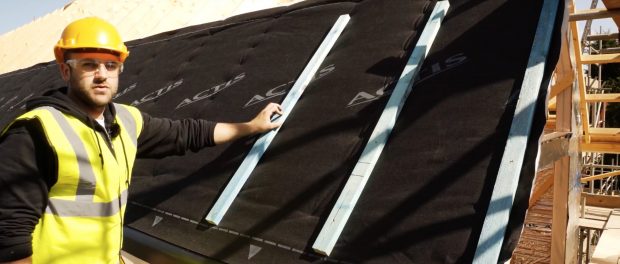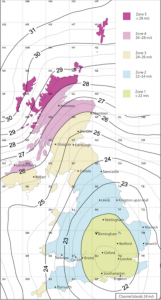Met office Storm Eowyn ‘danger to life’ alert sparks roof safety warning from Actis
 Boost ‘R Hybrid Roof in action
Boost ‘R Hybrid Roof in action
The Met Office’s ‘danger to life’ red warning ahead of the arrival of Storm Eowyn in the UK is another reminder of the importance of constructing roofs which can withstand extreme weather conditions, says insulation specialist Actis.
Warnings that wind gusts of up to 100mph could see roofs blown off buildings in Northern Ireland and parts of Scotland, and amber and yellow warnings issued for other parts of the UK underline the need to comply with roof construction building regulations.
Actis UK and Ireland sales director Mark Cooper explained: “That building standard – snappily titled BS5534:2014 slating and tiling for pitched roofs and vertical cladding code of practice specifying criteria – addresses every component of the construction of a standard roof, including underlays, mortar bedding, battens, flashings and structural sheathing fixings.
“And with not all underlays being suitable for use across all five regions of the UK, roofs in areas prone to being hit by strong winds need to choose membranes which are deemed suitable for use in these zones. Our insulating breather membrane Boost R Hybrid Roof is BRE-approved for use in even the windiest parts of the British Isles, including those affected by Storm Eowyn.
“It’s worth noting that some underlays are only suitable for use in zones one to three.”

The map shows the zones in which Boost R Hybrid can be used. It has been approved for use in zones 1- 5, which include the areas affected by Storm Eowyn, while some underlays only achieve zones 1 – 3 approval. © IHS, reproduced with permission from BRE DG 489, 2014 edition
Boost R Hybrid Roof has passed the BRE’s all-important wind uplift resistance test, with appropriate package labelling ensuring that roofers and builders can easily identify the correct underlay for the geographical region in which they are working, something particularly relevant for contractors working in wind-affected areas.
Using Boost R Hybrid Roof means builders can minimise the ‘ballooning effect’ which sees the underlay force tiles and slates off the roof in high winds.
Underlay is not allowed to balloon more than 35mm.
The wind uplift pressure achieved by Boost ‘R Hybrid during the tests was way more effective than that required under the building standard, which calls for a minimum wind uplift resistance of 1600 Pa for a 345mm batten gauged roof covering, rising to 2350Pa for roofs with no ceiling and a permanent dominant opening.
Boost R Hybrid Roof managed an impressive average of 3054Pa when used with taped lap alone and 5748Pa with the addition of a 38mm counter batten.

